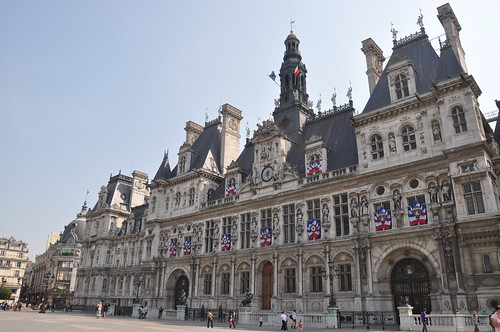
Este fantástico palácio do século XIX, localizada na Praça com o seu nome, é um edificio público que funciona como Câmara Municipal, ou seja é aqui que trabalha a administração da cidade de Paris.
Foi sempre esta a sua localização ainda que com um edificio diferente, o que estava antes era do século XVII e foi destruído por um incêndio durante a insurreição popular de 1871.
This fantastic nineteenth century palace, located in the Plaza with its name, is a public building that serves as town hall, it is here the administration of the city of Paris.
This was always it's location but with a different building, the one that was here before was from the seventeenth century and was destroyed by fire during the uprising of 1871.
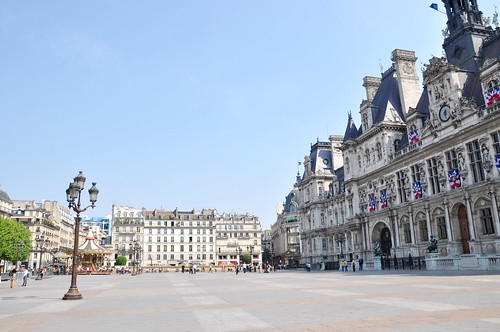
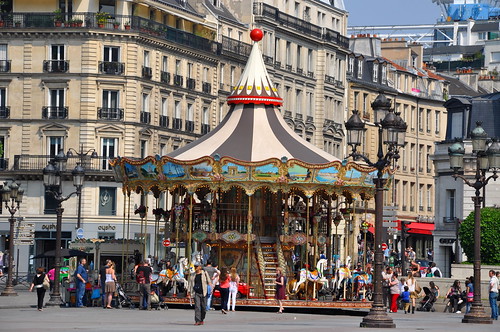

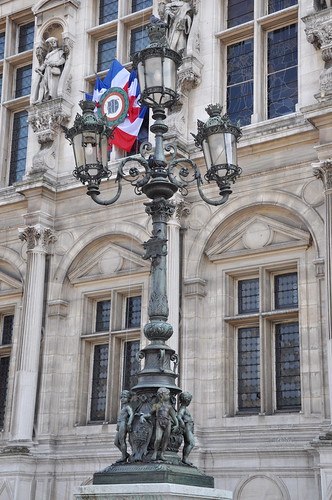
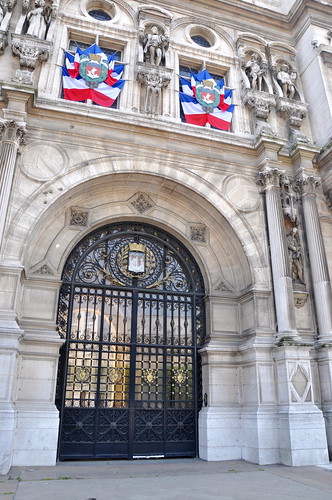
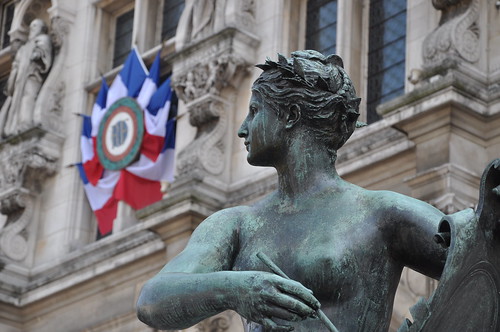

This was always it's location but with a different building, the one that was here before was from the seventeenth century and was destroyed by fire during the uprising of 1871.

A sua praça é ampla, ao fundo está um típico carroussel.
Dois anos depois, em 1873, começavam as obras para reconstruir o edificio. A sua fachada é impressionante, principalmente pela quantidade de detalhes e pormenores decorativos nela colocados.
Junto ao relógio podemos ver as palavras: "Liberté, Egalité e Fraternité", o lema da Revolução Francesa e que se mantém até aos dias de hoje.
Os portões ornamentados, os candeeiros de rua igualmente trabalhados, são apenas alguns desses pormenores que podemos apreciar.
Its square is wide, in the background is a typical carousel.
Two years later, in 1873, the work began to reconstruct the building. Its façade is impressive, especially the amount of detail and decorative items made it.
Next to the clock we can see the words "Liberte, Egalite and Fraternite", the motto of the French Revolution and remains until the present day.
The ornate gates, the street lamps also worked, are just a few details that we can appreciate.
Two years later, in 1873, the work began to reconstruct the building. Its façade is impressive, especially the amount of detail and decorative items made it.
Next to the clock we can see the words "Liberte, Egalite and Fraternite", the motto of the French Revolution and remains until the present day.
The ornate gates, the street lamps also worked, are just a few details that we can appreciate.





Também na fachada estão duas estátuas, uma representa a Ciência e a outra a Arte.
Ali perto vemos a Torre de Saint-Jacques, o único vestigio de uma igreja medieval do século XVI. Hoje utilizada como laboratório meteorológico e na sua base está uma estátua de Blaise Pascal, um cientista do século XVII que utilizava a torre para as suas experiências. Tem 52 metros de altura.
Also on the front are two statues, one representing Science and the other Art.
Nearby we see the tower of Saint-Jacques, the only vestige of a medieval church of the sixteenth century. Today used as a meteorological laboratory and at its base is a statue of Blaise Pascal, a seventeenth-century scientist who used the tower to his experiences. Is 52 feet tall.
Nearby we see the tower of Saint-Jacques, the only vestige of a medieval church of the sixteenth century. Today used as a meteorological laboratory and at its base is a statue of Blaise Pascal, a seventeenth-century scientist who used the tower to his experiences. Is 52 feet tall.

Our guide of:


Sem comentários:
Enviar um comentário